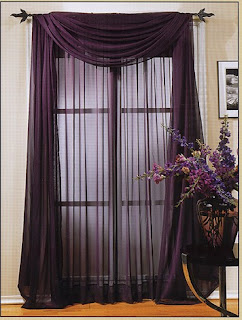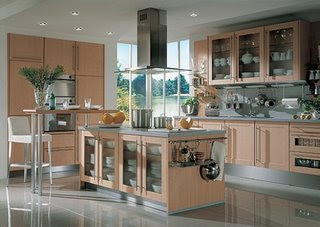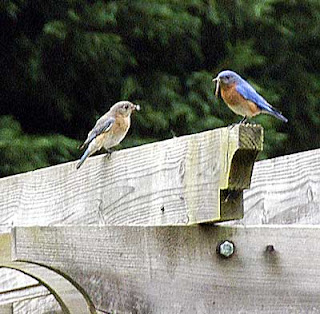There hasn't been any rain today so far, but the cold front continued to push through. The high was in the upper 40's (° F) - chilly for us at the end of March. Not only our native woodland wildflowers are in flower, but leaves are expanding on most of our native hardwood tree species as well as native shrubs. A favorite native vine, coral honeysuckle, is 'waiting' for the first hummingbirds in our yard.
The hummingbird website posts indicate that sightings have been all around us, but in spite of our feeders being up, we haven't seen any yet. Hopefully, sometime soon!
 The potato sprouts are finally making an appearance in the satellite garden. The squirrels have been disturbing the beds by digging holes, but the potatoes are fine.
The potato sprouts are finally making an appearance in the satellite garden. The squirrels have been disturbing the beds by digging holes, but the potatoes are fine.
The radicchio, much appreciated by squirrels and woodchucks last fall, has produced lovely new spring leaves. I've harvested a number of them already.
 But I'm on the trail of nabbing my primary vegetable garden herbivore, an errant woodchuck, who unfortunately thinks our natural garden isn't a bad home, even though it really isn't normal woodchuck habitat, or maybe s/he has just been pushed out of good habitat, without natural predators to keep population numbers in check.
But I'm on the trail of nabbing my primary vegetable garden herbivore, an errant woodchuck, who unfortunately thinks our natural garden isn't a bad home, even though it really isn't normal woodchuck habitat, or maybe s/he has just been pushed out of good habitat, without natural predators to keep population numbers in check.  I'm not sure how to consider the wildlife habitat issues in this regard -- I AM a wildlife gardener, but if a hungry woodchuck (due to overpopulation) eats all of the veggies I'm growing, in sequence of preference (uh, I'm trying to grow my own local vegetables), well, I'm thinking I need to relocate the culprits to more fertile (!) pastures.
I'm not sure how to consider the wildlife habitat issues in this regard -- I AM a wildlife gardener, but if a hungry woodchuck (due to overpopulation) eats all of the veggies I'm growing, in sequence of preference (uh, I'm trying to grow my own local vegetables), well, I'm thinking I need to relocate the culprits to more fertile (!) pastures.
I've now got a large Havahart trap, baited with spinach dabbed with 'Chuckster' paste, with drops of some kind of woodchuck lure leading to the trap. The smaller trap, baited similarly, simply had the spinach disappear. We'll see!
Read more...



 This adorable 929-square-foot carriage house in Des Moines, Iowa was completely transformed by the Country Living design team. I love the simple stencil pattern on the gorgeous aqua end walls of the upstairs. -Country Living
This adorable 929-square-foot carriage house in Des Moines, Iowa was completely transformed by the Country Living design team. I love the simple stencil pattern on the gorgeous aqua end walls of the upstairs. -Country Living



























